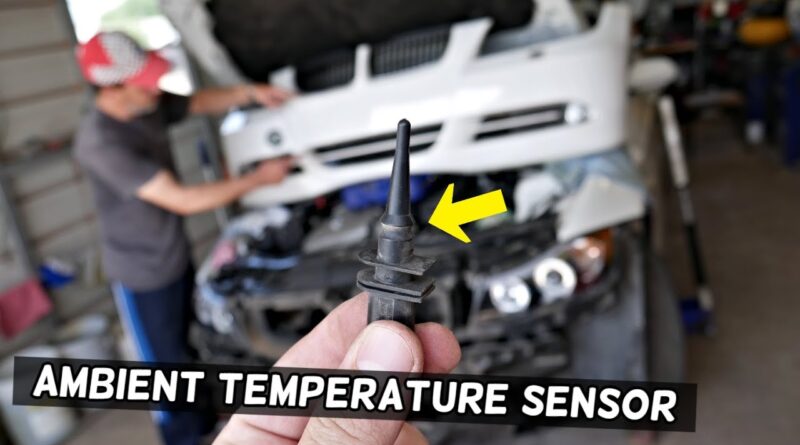Unleashing the Power of Best Ambient Temperature Sensors
What Is an Ambient Temperature Sensor? An ambient temperature sensor or air temperature sensor, is a device which measures ambient temperatures in its surroundings with exceptional accuracy, enabling systems to adapt more easily as ambient conditions shift over time. Sensors play an integral role in making sure systems function as efficiently and sustainably as possible for energy savings and system longevity. They’re essential in IoT devices, vehicles or HVAC systems alike!
However, how exactly do sensors operate and why are they vital parts of different industries, including automotive engineering, IoT and HVAC? We will explore that further here.
How Ambient Temperature Sensors Work
Ambient temperature sensors employ various technologies for temperature measurement such as thermistors, thermocouples or digital sensors. Although each kind of sensor performs in its own unique way, their primary goal remains the same – to monitor variations in temperature levels before translating this reading into an electrical signal that can then be processed further.
Most widely utilized temperature sensors that monitor ambient temperatures include:
Thermistors (Thermal Resistors) are highly cost-effective and sensitive thermoresistors that make them suitable for automobile and consumer applications.
Digital Temperature Sensors offer more precise and easily calibrated readings that make them popularly utilized in IoT as well as smart home systems, while analog Temperature Sensors tend to be used more commonly for weather monitoring and other simpler applications due to their physical appearance.
Industries often prefer thermocouples due to their ability to accurately and quickly measure an expansive temperature range with pinpoint precision. No matter its model, thermocouples remain vital components in devices requiring accurate temperature monitoring as well as adaptive responses.
Automotive Engineering Applications
Sensors that monitor ambient temperatures have become an essential element in modern car designs. Concealed within their surroundings or strategically installed near an automobile’s grille, these sensors help control vehicle temperatures by monitoring exterior temperatures to maintain engine performance efficiency as well as provide security measures against theft or vandalism.
Key Roles in Vehicles: Climate Control The sensors send real-time data to the car’s smart thermostat in real-time to make sure cooling and heating systems are operating at optimal conditions, thus creating the ideal cabin climate conditions.
Sensors designed for engine efficiency play an invaluable role in optimizing combustion process, fuel injection and airflow management to further boost engine performance.
Safety Systems features such as defrosting and tire pressure monitoring rely on accurate readings from their surroundings for proper operation, without them automobiles wouldn’t be as comfortable and energy efficient as they are now.
Use Cases of IoT Devices
Internet of Things devices have transformed our everyday interactions, including temperature sensing for ambient temperatures as one key aspect. They work alongside humidity sensing devices to provide accurate environmental conditions information.
Popular IoT Applications: Whilst Nest and Ecobee thermostat sensors regulate your home’s temperature to accommodate changing weather conditions, other popular smart thermostat applications include sensors built into devices that regulate its climate according to environmental changes such as rainstorms.
Wearable fitness trackers utilize sensors in the environment to track temperature changes and help users make plans for workouts and sports activities. Appliances such as refrigerators, ovens and air purifiers use similar technologies for efficient control in an indoor space.
These devices rely on temperature sensors with reliability to automate processes and enhance user experiences.
HVAC (Heating Ventilation Heating Conditioning) systems serve as an obvious example of why ambient sensors are vital components. Room-specific temperature sensors as well as air temperature monitors help create a secure, comfortable indoor environment while optimizing energy use efficiency.
Benefits of HVAC Systems:
Temperature Control HVAC systems have the ability to quickly regulate air and heat flow to keep indoor temperatures within ideal thresholds.
Energy Savings Sensors allow businesses and institutions to reduce energy use when it isn’t needed by finding out when cooling or heating are not required, cutting back energy usage in turn saving costs and prolonging equipment lifespan. Prevent Overload of Equipment Accurate measurements help prevent equipment from overloading extending component lifespan further still.
HVAC systems without reliable temperature or sensor measurements simply won’t deliver the comfort or value we have come to expect from them.
Selecting an Appropriate Sensor
Finding an optimal temperature sensor depends upon several considerations; which includes variables like cost and environmental conditions.
Automotive, IoT and HVAC systems all require different specifications from sensors. When selecting one to use in your environment (for instance a automobile engine vs an unrefrigerated warehouse), be certain it operates within its temperature band ranges to maximize accuracy and avoid unexpected malfunction.
Specificity and Accuracy For applications like medical devices or industrial control systems that require higher accuracy, and to meet input requirements such as digital or analog input requirements for sensors. It’s also essential that any sensor fits with its system support requirements (for instance ensuring compatibility).
Firms often make use of wireless thermostats due to their ease of integration. By taking into consideration all relevant factors and carefully considering them when making your selection of thermometer, you will ensure you find one which meets all of your specifications and requirements.
Future Trends and Inventions
Temperature sensors continue to advance, with recent innovations moving toward smaller, improved sensors with eco-friendlier properties.
Key Developments on the Horizon: AI Integration The development of intelligent technology using artificial intelligence will utilize sensor data and forecast temperature patterns more accurately for increased effectiveness.
Miniaturized Sensors
Tiny sensors offer access to some of the newest wearable tech and IoT gadgets. Green Materials In the coming years, expect sensors crafted using sustainable components that promote sustainable manufacturing practices.
Advance Multi-Sensors Combining temperature and humidity sensors delivers accurate information about environmental conditions in real time, offering users valuable environmental data that they need in the form of real time environmental updates. Technological developments will likely open up additional capabilities of monitoring technologies for temperature over the years to come.
Why Ambient Temperature Sensing Matters
Ambient temperature sensors serve more than simply as monitoring devices – they’re essential tools that increase efficiency, sustainability and innovation across a variety of fields – such as engine performance optimization, developing Internet of Things products or creating intelligent HVAC systems.
Are You Searching for High-Quality Temperature Sensors to Include in Your Project? Take some time and investigate your options, selecting one which meets all of your specifications and meets the unique demands of your application.
Are you curious to understand more about how sensors will improve productivity at your company? Access industry research findings as well as some of the top sensors available by searching [Your Company Name The Company Name.
What exactly does an outdoor temperature sensor do?
A sensor for ambient temperature measures the air around us accurately to enable machines and systems to react promptly when changes in environment occur.
What happens if an ambient temperature sensor becomes outdated or malfunctions?
A failed sensor could disrupt engine performance, climate control in vehicles and HVAC systems by performing poorly or incorrectly, leading to adverse outcomes such as improper engine management or climate control in homes or poor indoor air quality levels.
What are the costs involved with replacing an air temperature sensor?
Replacement usually ranges between $50 and $200 depending on your car or system – while labor fees will differ significantly.
What steps can be taken to adjust my sensor back to ambient temperatures?
Resetting the device generally entails disconnecting its battery for some time; please refer to your user manual for specific guidance on doing this.
Buy ambien online Follow Topics and daily tips Ambien for Insomnia: Key Effects, Risks, and Essential Safety Tips




